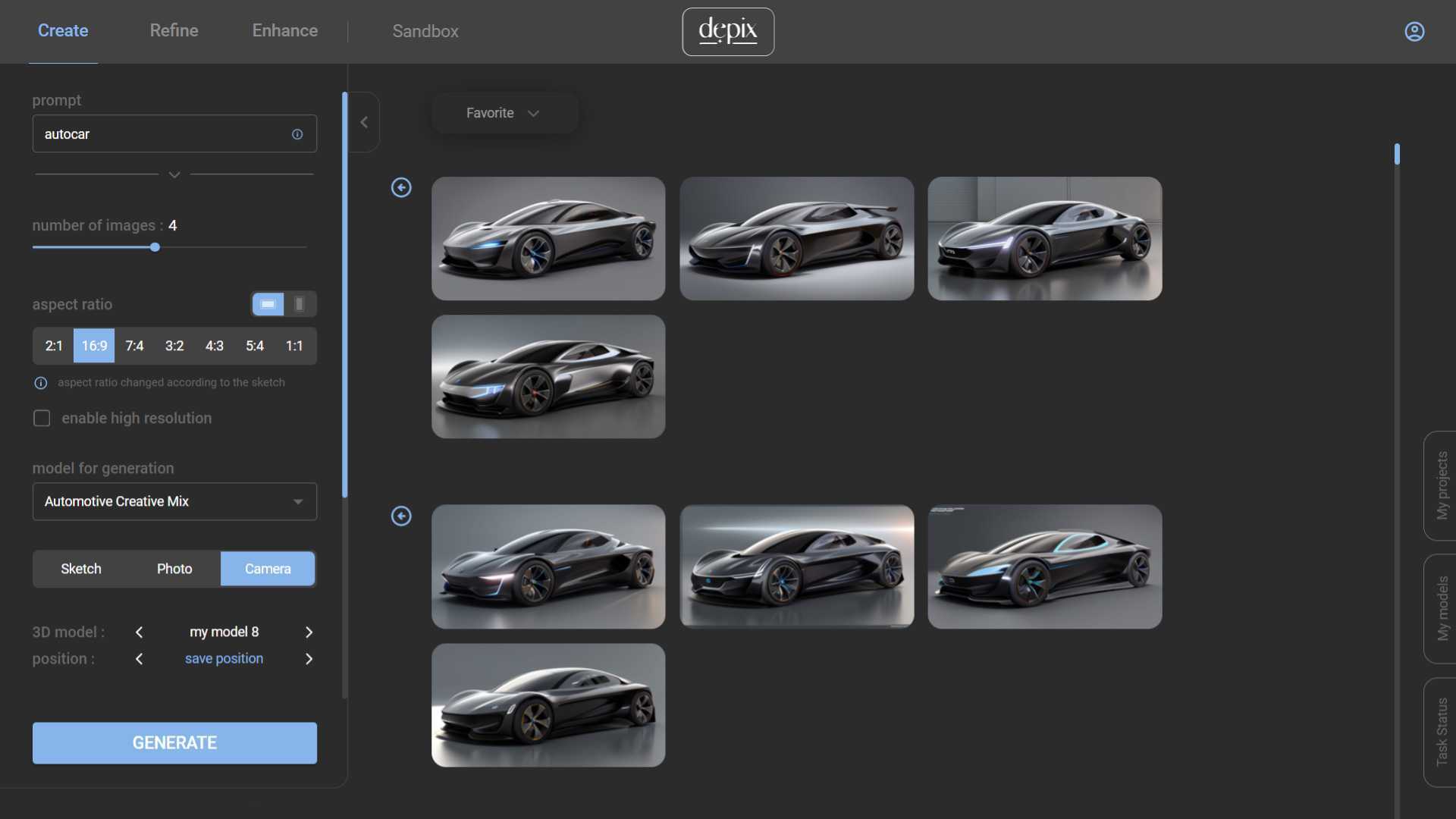Custom AI Workflow: Is It Worth It?
Artificial intelligence has moved from a futuristic concept to an everyday business tool. Today, industry leaders use solutions such as ChatGPT, Midjourney, and other AI public platforms to speed up ordinary tasks, generate ideas, and increase the efficiency of the team.
However, for large companies, these public tools are often not enough, because they are often not built with enterprise in mind. Available public tools aren’t designed to handle sensitive data securely, follow strict compliance rules, or adapt to the complex, tailored processes of a specific business. What works well for the general public can become a limitation or even a risk for enterprises.
This raises a strategic question for executives: “Should we rely on public AI tools with all their limitations, or should we invest in building custom AI-powered workflows that fit our company’s exact needs and safeguard our data?”
By the end of this article, we’d like you to be able to answer this question for yourself. But first, let’s clarify – what does a custom AI workflow actually mean, and what does it take to build one?
Сontent
1. What does “Build Your Own AI Workflow” Mean?
2. Benefits of a Custom AI Workflow
3. Key Factors to Consider Before Building
4. Conclusion: Is It Worth It?

1. What does “build your own AI workflow” mean?
When people hear “build your own AI workflow,” especially in the context of Large Language Models (LLMs), they often imagine tech giants like Google or OpenAI training models like GPT-4 completely from scratch. But in reality, for most businesses, building your own AI workflow is much more practical and far more accessible.
Let’s put it simply. You don’t need to train a massive model from scratch to “build your own AI workflow,” since those models are already created and trained by large corporations and the open-source community. Instead, it’s about smartly combining and fine-tuning different existing AI models into a custom pipeline that solves your specific problem.
Imagine an automotive company that already uses MidJourney to create initial design prototypes. While MidJourney can generate good visual ideas, the company wants to add features that MidJourney doesn’t provide. For example, automatic application of their brand-specific color palette, generation of prototypes in predefined product dimensions, and automatic annotations for internal review. By building a custom AI generation workflow on top of the existing models, these new features can be integrated directly into the company processes, saving time, reducing manual adjustments, and ensuring every prototype already reflects the company’s standards and style. This is an example of the first approach: fine-tuning and building on top of existing AI models.

Illustration from the project Custom AI Image Generation Tool – Depix Design Lab
The second approach to building a custom AI workflow is setting up a tailored AI pipeline that works directly with your company’s proprietary data.
Unlike fine-tuning, this approach focuses less on changing the underlying AI models themselves and more on how it is embedded into your unique business processes. It involves creating a pipeline that first of all transforms your data to the required format and then feeds the AI relevant information from your transformed internal databases before generating an output. For large-language models, this method is commonly known as Retrieval-Augmented Generation (RAG), but the same principle can apply to other modalities. For example, in image generation, the system might retrieve relevant visual references, such as past designs or style images, and incorporate several steps combining differently purposed AI models to achieve the best result for your needs.
Using this approach, we developed the Real-Data Management AI Chatbot. Consider a practical use case: a medical student doing an internship at a clinic who relies on a general LLM, like ChatGPT, to ask questions about treatments. While the LLM can provide publicly available information, its answers may be too generic, outdated, or even inaccurate for a specific clinical case. In the worst case, it could give incorrect guidance or hallucinate information, potentially leading to flawed treatment decisions.
Now, imagine the clinic has its own custom AI Chatbot. The system leverages a vector database of internal documentation and connects to a structured SQL medical database. It searches through dozens of research papers, anonymized patient records, and up-to-date treatment guidelines. The chatbot formulates precise queries, interprets the results, and generates accurate, context-specific answers with clear references to internal sources. This ensures the outputs are current, verified, and tailored to the clinic’s knowledge.

Illustration from the project Custom Real-Data Management AI Chatbot
2. Benefits of a custom AI workflow
We highlighted 3 real benefits for businesses that choose the custom AI workflow approach. These are the key advantages that truly make a difference:
- AI THAT UNDERSTANDS YOUR BUSINESS
Public AI tools are made for everyone, which often makes their results too broad or generic. A custom AI workflow is adapted to your company’s own data and processes and follows your internal rules and brand style. It leverages the terms your team uses, understands how your processes work, and “speaks” in your unique voice. Whether it’s writing a report, answering a customer question, or generating creative content, the AI acts as if it were part of your team.
- AI THAT WORKS SECURELY
Security and privacy are critical when working with sensitive information. Sending your data to public APIs can mean losing control over who sees it and how it’s stored. With a custom AI model, everything stays within your own secure environment, on-premises or in a private cloud. That means your intellectual property and client data never leave your company. This setup also makes it easier to follow strict industry rules like GDPR in Europe or HIPAA if we are talking about the healthcare industry. In short, your data remains protected, and compliance risks are reduced.
- AI THAT GIVES YOU INDEPENDENCE
When you rely fully on outside AI providers, you’re subject to their rules: pricing changes, limited features, and even service interruptions or discontinuations. With your own AI workflow, you control the infrastructure, costs, and updates. This independence lets you move faster, experiment freely, and adjust the system as your business grows. On top of that, a custom approach can create solutions your competitors cannot easily copy, giving you a real competitive edge. Instead of using the same tools as everyone else, you build technology that sets you apart in the market.
Together, these benefits show that a custom AI workflow is more than just a tool — it becomes a trusted part of your business, working seamlessly with your team, safeguarding your data, and giving you the freedom to innovate.
3. Key factors to consider before building
Before jumping into a custom AI project, it’s important to evaluate a few critical factors:
- CONSIDER YOUR BUSINESS GOAL
Start with the “why.” Define the main challenge you want to solve. If there is no clear challenge, investing in a custom AI workflow may not be necessary. But if the challenge is significant and existing tools don’t fully address it, then exploring a custom approach could be worth considering.
- EXPERTISE
Once your business goal is clear, consider the expertise needed to build and maintain a custom AI approach. Developing a reliable, secure, and compliant solution requires skills in data science, AI engineering, and regulatory standards. If this expertise isn’t available in-house, partnering with an experienced provider can guide you through the process and ensure a smoother, more successful implementation.A good service provider will also help you plan your custom AI solution for flexibility and scalability. Even if exact future needs aren’t known, the system can be built on a flexible architecture that will allow adding new data, handling additional tasks, or integrating with other tools without major disruptions, ensuring the AI grows alongside your business.
- СHECK YOUR DATA
Once the goal is clear, the next question is whether you have the right data to support it. AI is only as strong as the information it relies on. If your datasets are clean, structured, and relevant, you’re in a good position. If not, you may need to invest in preparing or collecting data before moving forward.
- PLAN YOUR INFRASTRUCTURE AND BUDGET
To run a custom AI model securely and independently, your company needs the right setup — whether it’s a private cloud or on-premises infrastructure. While the service providers like our company can help build and maintain the solution, you still need to plan the budget and make sure your IT environment is ready to support it. This preparation ensures the model runs smoothly and delivers lasting value.
Take the time to carefully evaluate these factors. Start by clarifying your goals, which will help you determine whether moving forward makes sense. If you’d like to get advice in your brainstorming, book a free 30-minute consultation with us. We’ll help you assess whether a custom AI approach is the right choice for your company or recommend alternative ways to address your challenges.
4. Conclusion: is it worth it?
So, is building a custom AI approach worth the investment? The answer depends on your business. For small teams with lightweight needs, public AI tools may be enough to experiment and save time. But for enterprises managing sensitive data, operating under strict compliance rules, or tackling complex, non-trivial tasks, a custom AI model can deliver real value—ensuring outputs follow your brand DNA, reflect your internal processes, and integrate seamlessly with your workflows.
A custom AI workflow is not just about keeping up with trends. It’s about creating a reliable partner that understands your business, respects your data, and grows with you. Companies that make this move today set themselves up for long-term efficiency, security, and independence—while others remain limited by the constraints of public tools.
In the end, the decision comes down to one question:
Do you want AI that works like a general assistant for everyone, or an intelligent partner designed specifically for your business?
Want to brainstorm? Need guidance or a concrete plan with numbers? Just contact us.

